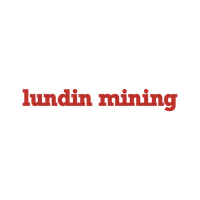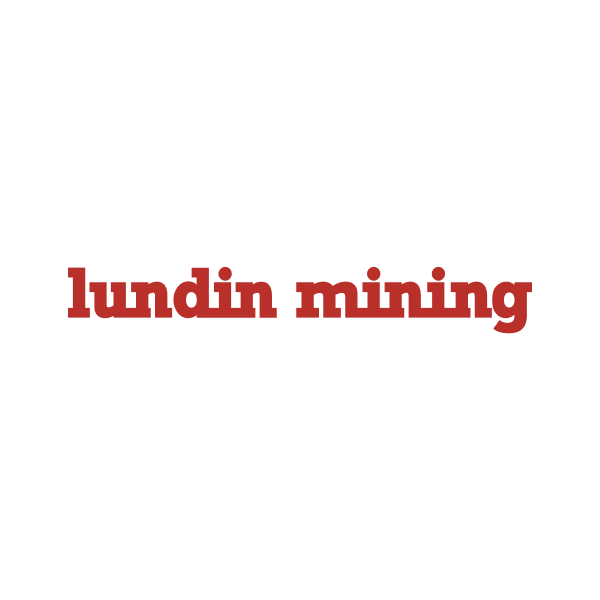
Lundin Mining Corp
TSX:LUN


| US |

|
Johnson & Johnson
NYSE:JNJ
|
Pharmaceuticals
|
| US |

|
Berkshire Hathaway Inc
NYSE:BRK.A
|
Financial Services
|
| US |

|
Bank of America Corp
NYSE:BAC
|
Banking
|
| US |

|
Mastercard Inc
NYSE:MA
|
Technology
|
| US |

|
UnitedHealth Group Inc
NYSE:UNH
|
Health Care
|
| US |

|
Exxon Mobil Corp
NYSE:XOM
|
Energy
|
| US |

|
Pfizer Inc
NYSE:PFE
|
Pharmaceuticals
|
| US |

|
Palantir Technologies Inc
NYSE:PLTR
|
Technology
|
| US |

|
Nike Inc
NYSE:NKE
|
Textiles, Apparel & Luxury Goods
|
| US |

|
Visa Inc
NYSE:V
|
Technology
|
| CN |

|
Alibaba Group Holding Ltd
NYSE:BABA
|
Retail
|
| US |

|
JPMorgan Chase & Co
NYSE:JPM
|
Banking
|
| US |

|
Coca-Cola Co
NYSE:KO
|
Beverages
|
| US |

|
Walmart Inc
NYSE:WMT
|
Retail
|
| US |

|
Verizon Communications Inc
NYSE:VZ
|
Telecommunication
|
| US |

|
Chevron Corp
NYSE:CVX
|
Energy
|
Utilize notes to systematically review your investment decisions. By reflecting on past outcomes, you can discern effective strategies and identify those that underperformed. This continuous feedback loop enables you to adapt and refine your approach, optimizing for future success.
Each note serves as a learning point, offering insights into your decision-making processes. Over time, you'll accumulate a personalized database of knowledge, enhancing your ability to make informed decisions quickly and effectively.
With a comprehensive record of your investment history at your fingertips, you can compare current opportunities against past experiences. This not only bolsters your confidence but also ensures that each decision is grounded in a well-documented rationale.
Do you really want to delete this note?
This action cannot be undone.

| 52 Week Range |
9.17
27.97
|
| Price Target |
|
We'll email you a reminder when the closing price reaches CAD.
Choose the stock you wish to monitor with a price alert.

|
Johnson & Johnson
NYSE:JNJ
|
US |

|
Berkshire Hathaway Inc
NYSE:BRK.A
|
US |

|
Bank of America Corp
NYSE:BAC
|
US |

|
Mastercard Inc
NYSE:MA
|
US |

|
UnitedHealth Group Inc
NYSE:UNH
|
US |

|
Exxon Mobil Corp
NYSE:XOM
|
US |

|
Pfizer Inc
NYSE:PFE
|
US |

|
Palantir Technologies Inc
NYSE:PLTR
|
US |

|
Nike Inc
NYSE:NKE
|
US |

|
Visa Inc
NYSE:V
|
US |

|
Alibaba Group Holding Ltd
NYSE:BABA
|
CN |

|
JPMorgan Chase & Co
NYSE:JPM
|
US |

|
Coca-Cola Co
NYSE:KO
|
US |

|
Walmart Inc
NYSE:WMT
|
US |

|
Verizon Communications Inc
NYSE:VZ
|
US |

|
Chevron Corp
NYSE:CVX
|
US |
This alert will be permanently deleted.
Lundin Mining Corp
Nestled within the intricate tapestry of the global mining industry, Lundin Mining Corporation stands as a pillar of resource extraction success. With its inception rooted in strategic exploration, Lundin Mining has matured into a multinational force, adeptly straddling the complex landscape of base metal extraction and production. The Canadian company's operational prowess spans continents, with mining operations in Chile, the United States, Portugal, Brazil, and Sweden. These regions are not chosen by accident; each is rich in essential base metals such as copper, zinc, and nickel—interlinked with Lundin’s mission to meet the ever-evolving demands of modern infrastructure and technology. By mining and refining these critical resources, Lundin not only bolsters its bottom line but plays an integral role in the supply chain of essential materials that power industries worldwide.
The wheels of Lundin Mining’s profitability turn efficiently due to a keen focus on operational excellence and sustainable practices. By implementing advanced mining technologies and adhering to rigorous environmental standards, the company enhances its productivity while simultaneously mitigating its ecological footprint. This balance is crucial; the company must navigate both the economic pressures of fluctuating commodity prices and heightened environmental scrutiny. Lundin Mining generates revenue by selling its extracted and processed metals directly to various industries, aligning with market demands that ebb and flow with global economic tides. Through strategic investments and continuous exploration efforts, Lundin secures its future growth, ensuring a steady pipeline of resources while maintaining its commitment to responsible mining practices.

Nestled within the intricate tapestry of the global mining industry, Lundin Mining Corporation stands as a pillar of resource extraction success. With its inception rooted in strategic exploration, Lundin Mining has matured into a multinational force, adeptly straddling the complex landscape of base metal extraction and production. The Canadian company's operational prowess spans continents, with mining operations in Chile, the United States, Portugal, Brazil, and Sweden. These regions are not chosen by accident; each is rich in essential base metals such as copper, zinc, and nickel—interlinked with Lundin’s mission to meet the ever-evolving demands of modern infrastructure and technology. By mining and refining these critical resources, Lundin not only bolsters its bottom line but plays an integral role in the supply chain of essential materials that power industries worldwide.
The wheels of Lundin Mining’s profitability turn efficiently due to a keen focus on operational excellence and sustainable practices. By implementing advanced mining technologies and adhering to rigorous environmental standards, the company enhances its productivity while simultaneously mitigating its ecological footprint. This balance is crucial; the company must navigate both the economic pressures of fluctuating commodity prices and heightened environmental scrutiny. Lundin Mining generates revenue by selling its extracted and processed metals directly to various industries, aligning with market demands that ebb and flow with global economic tides. Through strategic investments and continuous exploration efforts, Lundin secures its future growth, ensuring a steady pipeline of resources while maintaining its commitment to responsible mining practices.
Strong Quarter: Lundin Mining delivered its best quarter of the year, with $1 billion in revenue and solid operational execution.
Guidance Raised: Copper production guidance was increased by 11,500 tons at the midpoint to 319,000–337,000 tons for the year, driven by strong output at Caserones.
Costs Down: Consolidated cash cost guidance for copper was lowered to $1.85–$2 per pound, reflecting operational improvements and higher byproduct credits.
Operational Consistency: All major mines, including Candelaria, Caserones, and Chapada, are on track to meet or exceed updated production targets.
Free Cash Flow: The company generated $169 million in free cash flow from operations in Q3 and expects to be net debt free by year-end.
Growth Initiatives: Caserones cathode production exceeded expectations, with improvements expected to be sustained; progress continues at the Vicuna project.
Shareholder Returns: No Q3 buybacks, but $104 million repurchased year-to-date; company committed to $220 million total annual return via buybacks or a special dividend.

































